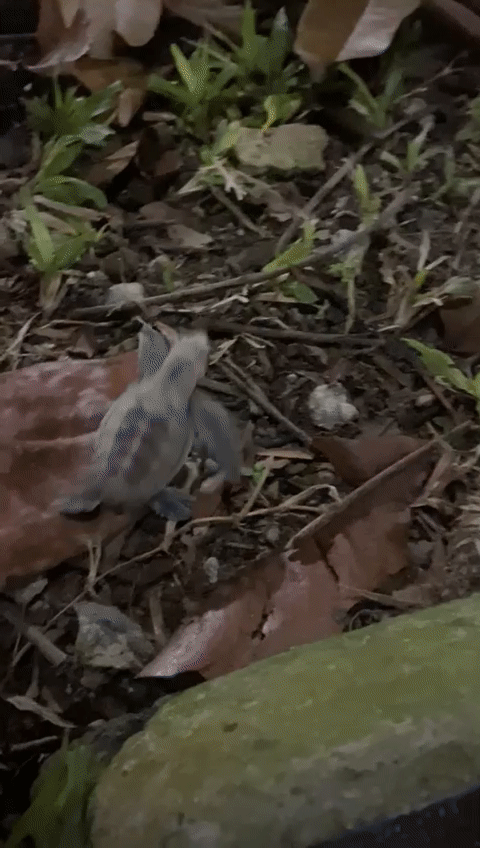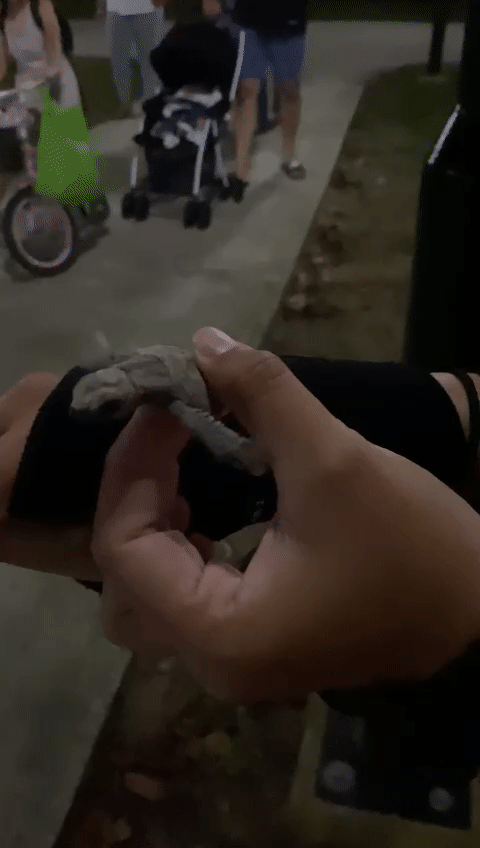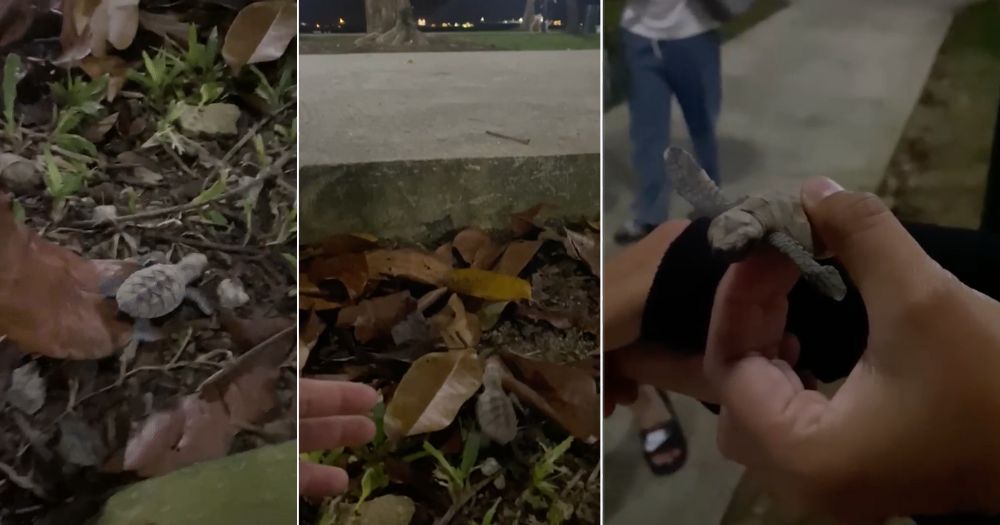Follow us on Telegram for the latest updates: https://t.me/mothershipsg
Every year, between June and September, turtles that were born in Singapore would return to the exact same spot to lay eggs.
During this nesting season, if you are lucky enough, you may get to see one of these gentle creatures of the sea, or their babies.
Turtle hatchling found alone at East Coast Park
One Singaporean who was taking a stroll at East Coast Park spotted a turtle hatchling late at night in July 2022.
As it was dark, she initially mistook the hatchling for a cockroach.
Speaking to Mothership, the park-goer, who prefers to stay anonymous and shall be called J from hereon, shared that she saw something moving on the grass by the side of the pedestrian pavement.
"The hatchling was right under a lamppost. At first I thought it was a cockroach. However, I realised it was moving too slowly to be a cockroach. So I came closer to have a good look, and realised that it was actually a turtle hatchling."
 Video courtesy of J, taken without flash light or light shone at the turtle.
Video courtesy of J, taken without flash light or light shone at the turtle.
Now, it's odd that the turtle hatchling was alone as these younglings usually hatch in batches, and they would scamper towards the sea, guided by the moonlight.
"There was only a single hatchling," J said.
J and her friend tried scouring the area but no other hatchlings were found.
 Video courtesy of J, taken without flash light or light shone at the turtle.
Video courtesy of J, taken without flash light or light shone at the turtle.
Bringing the turtle hatchling back to the beach
The turtle hatchling that was found inland had probably been distracted by the artificial lights in the park, and had therefore crawled away from the sea instead.
J then called a friend knowledgeable on marine and environmental conservation to seek advice on what to do with the hatchling.
While she was on the call, J followed her friend's instructions and brought the hatchling to the beach to release it.
J and her friend stood by to ensure the young turtle made its way into the sea safely.
The waves kept pushing the turtle back onto the shore. On top of that, J was worried that the turtle might get trapped by the marine trash that was drifting along the shoreline.
It took about 20 minutes before the turtle disappeared in the water.
J said that this was her first time having such a close encounter with a turtle.
"It was a wholesome experience knowing that I'm able to make a difference and guide this little guy to safety," she told Mothership.
She hopes by sharing this incident, more people would be aware of the marine life in Singapore and keep the environment clean and safe for them.
What to do if you find yourself in a similar situation?
Those who encounter a nesting turtle and its eggs should call the National Parks Board (NParks) helpline at 1800-471-7300 or the Acres wildlife rescue hotline at 9783 7782.
For nesting turtles in particular, NParks advises the public to keep a distance from the turtle and its eggs.
Touching the turtle may scare or provoke it, while handling the eggs may cause damage, or introduce bacteria into the nest.
Additionally, the public should note that light and noise may scare the turtle, causing it to leave without laying any eggs.
According to NParks, the public should also keep clear of the tracks left by the turtle, as this helps researchers identify the species of the turtle and locate its nest.
Those who spot a turtle can also help document turtle sightings in Singapore by filling in the survey form here.
For releasing of hatchlings, it is important to do so from at least three metres away from the water edge for them to crawl into the sea on their own.
In doing so, the hatchlings can then imprint the location and are likely to return to the same place when they become adults.
Related stories
Top image from videos courtesy of J.
If you like what you read, follow us on Facebook, Instagram, Twitter and Telegram to get the latest updates.
